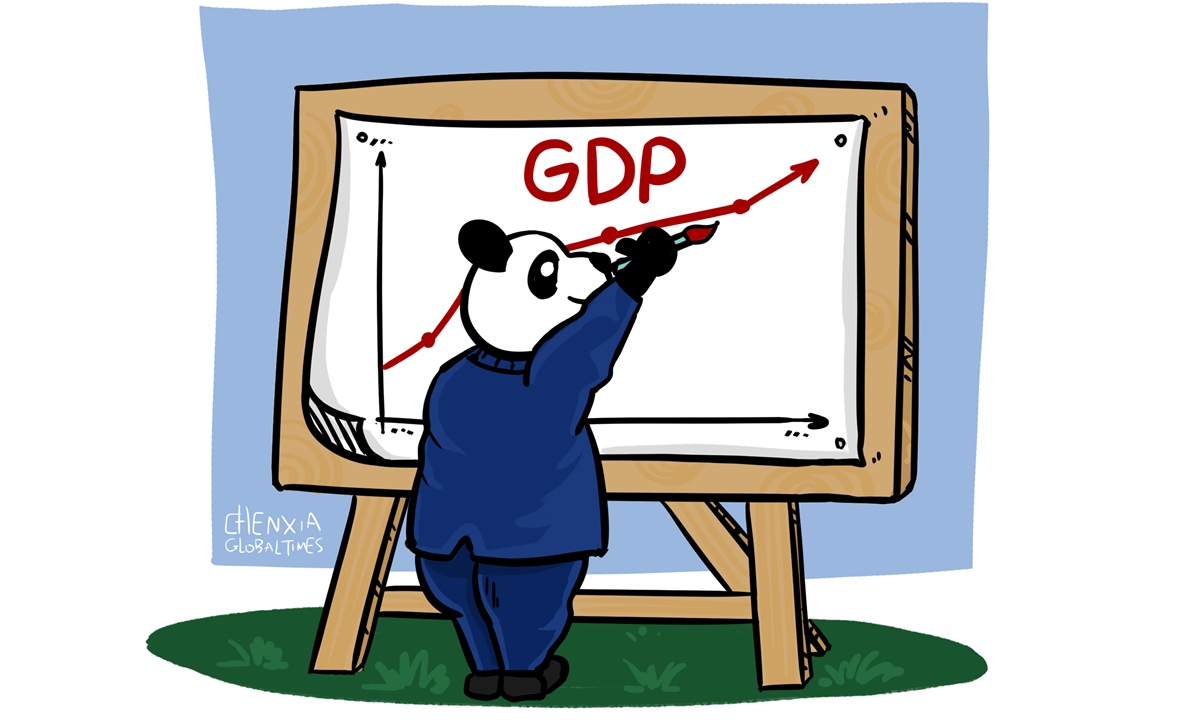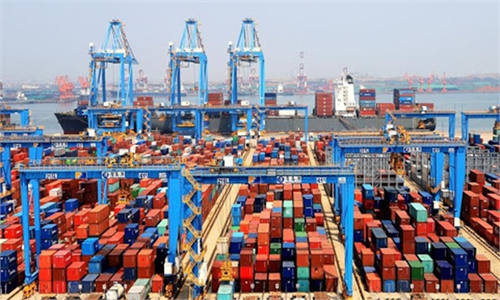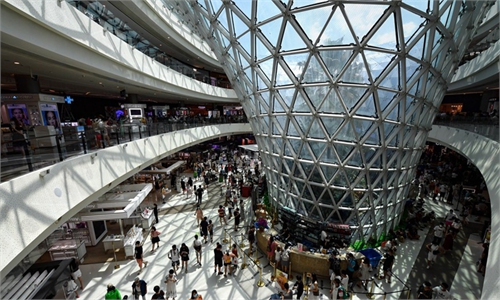COMMENTS / EXPERT ASSESSMENT
China ought to set a growth rate of at least 7.5% in 2021

Illustration: Chen Xia/GT
Economic planning has always played a pivotal role in presetting and helping realize China's annual goals in GDP growth, infrastructure and public service investment, inflation control and the central bank's credit supply level. For 2021, the policymakers, while ascertaining the country to be able to attain a growth rate of at least 7.5 percent, need to pay higher attention to addressing challenges such as the technology bottleneck, social inequality and carbon emissions.
The Central Economic Work Conference, to be held in December, choreographs economic targets, which will be made public when the National People's Congress meets in Beijing in early spring. As 2021 is the first year of the 14th Five-Year Plan, the world's eyes will focus on how the Chinese government maps out its policy priorities and economic action plans - which are certain to cause broad reverberations and ripple effects across other economies.
By all metrics of calculation, China's economy in the first quarter of 2021 will likely get off to a strong start, jumping from the lows seen in this year's early months when Beijing ordered a shutdown of all non-essential economic activities to stave off the spread of a sudden COVID-19 onslaught. The success of the government's efforts to clamp down on the contagious virus has laid the foundations for China to make a stellar economic recovery starting from late April.
High-quality development will guide China's economic planning for the coming five years. If the country is able to achieve an annual average GDP growth of 5 percent and, at the same time, weather probable geopolitical struggles with the US-led "Five-Eye" alliance, this country will become a fairly prosperous economy by 2025, with per-capita GDP reaching $15,000 or more, creating a colossal market size unparalleled in human history.
Some key initiatives, including pursuing productivity-centered, domestic-demand driven economic growth, pivoting to technology localization and home circulation, moving up the global value chain, financial market opening-up, digitalization, urbanization and green economy, all rely on top-level design and policy coordination between Beijing and provincial capitals, which is also a hallmark of China's distinct political and economic system.
Despite the double whammy of the pandemic assault and the Trump administration's relentless tariff war and economic punishment, China's economy is poised to stage a strong rally in the last quarter of this year and is expected to grow 5.7-5.9 percent year-on-year, according to estimates by a majority of Chinese economists. The feat will help policymakers to gain overwhelming confidence to overcome foreseeable difficulties and policy uncertainties at home and abroad - in particular, the economic harassment from the US.
As always, China will rely on its own domestic market or the "internal circulation" growth paradigm to step up its level of technology self-sufficiency, and ensure that its supply line is not blackmailed by other countries.
In 2021, the government's efforts to invest in "new infrastructure" projects - such as new materials, new energies, new mobile transmission systems, new space programs, new battle ships and new business models - should continue to receive higher levels of investment. Simultaneously, the country will continue to roll out high-speed railways, expressways, airports, seaports, and resolutely propel the urbanization process to let more migrant rural workers settle in cities.
Like domestic consumption and exports, government investment or spending on infrastructure projects will continue to be a strong pillar to power China's economic growth for many years before 2050. It is an advantage defined by the country's peculiar market-oriented socialist system.
And, the government is obliged to ask for or dictate higher pay for the country's ordinary workers. Only when thousands of millions of Chinese workers have access to growing income paid by businesses and government institutions, can they have more money in their pockets and shop more, reinforcing this economic growth.
Currently, the wealth gap between Chinese households is growing, as a small portion of corporate executives make millions, while up to 600 million workers are paid only 1,000 yuan a month, as revealed by Premier Li Keqiang earlier this year. The inequality and social divide needs to be carefully addressed, lest an accelerating polarization will hurt domestic consumption and social stability.
Next year, to cope with a changing global economic dynamic, China shall continue to keep a relatively loose financial policy, by maintaining ample liquidity and reasonable growth of money supplies. There are two considerations to back up this policy stance.
Firstly, in the aftermath of the pandemic, China needs reasonably ample financing to stabilize small and medium-size enterprises and employment and to bolster a faster economic recovery.
Secondly, the incoming US' Biden administration, EU, Japan and all the other major economies are set to ratchet up their stimulus level in 2021 to restart economies after a distressing 2020. China's central bank needs to keep its money supply in parallel with them, otherwise China's currency will face rising risks of appreciation, and China's equity market of stocks and bonds could face unbearable pressure.
The author is an editor with the Global Times. bizopinion@globaltimes.com.cn



